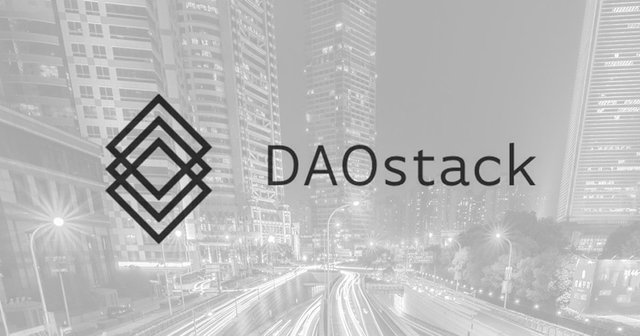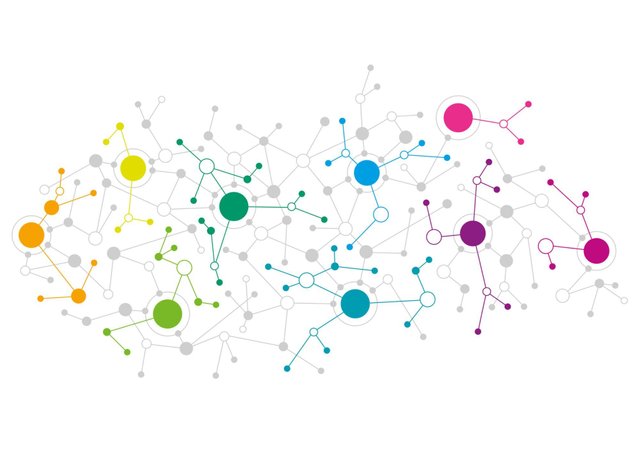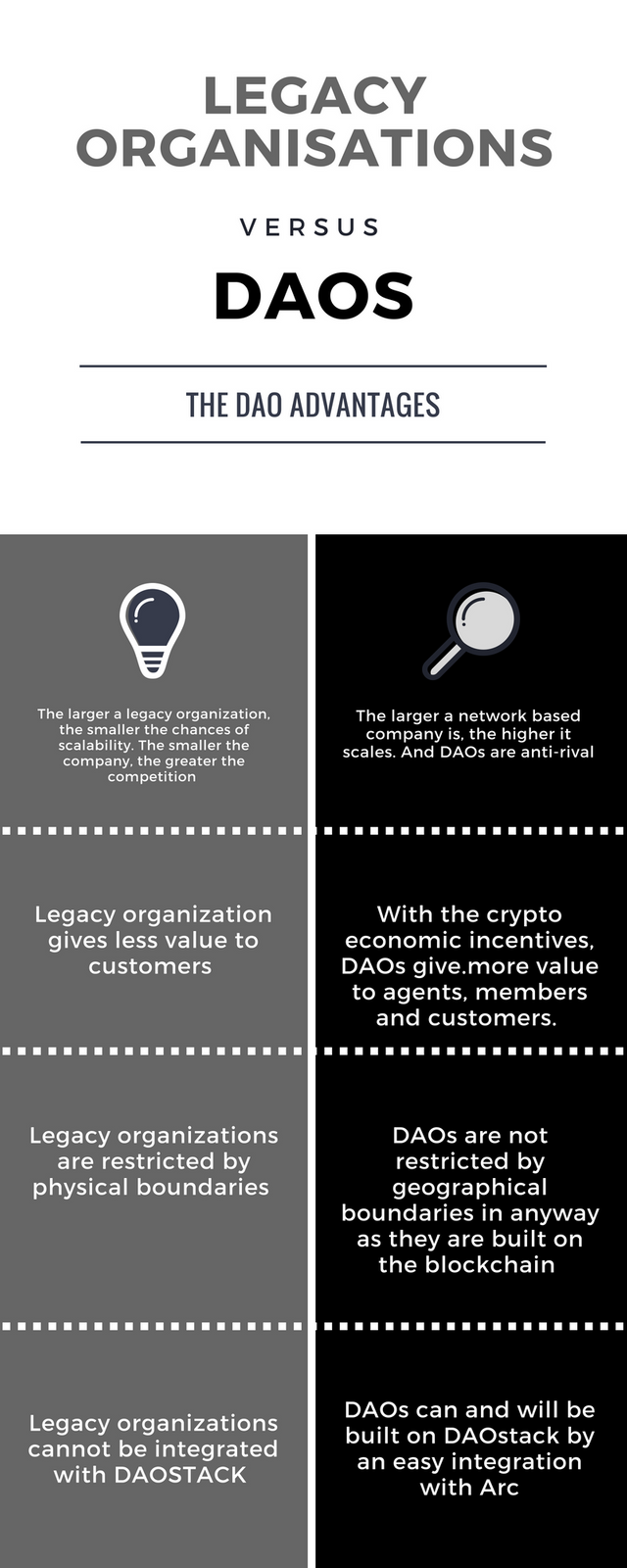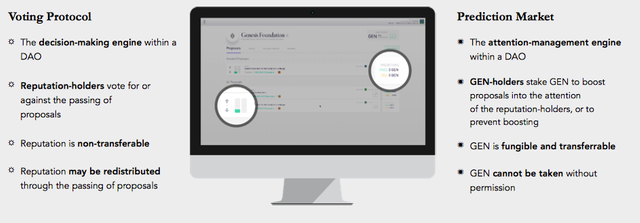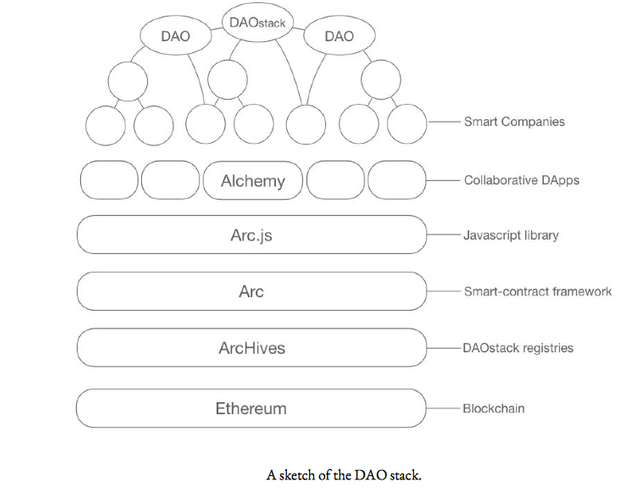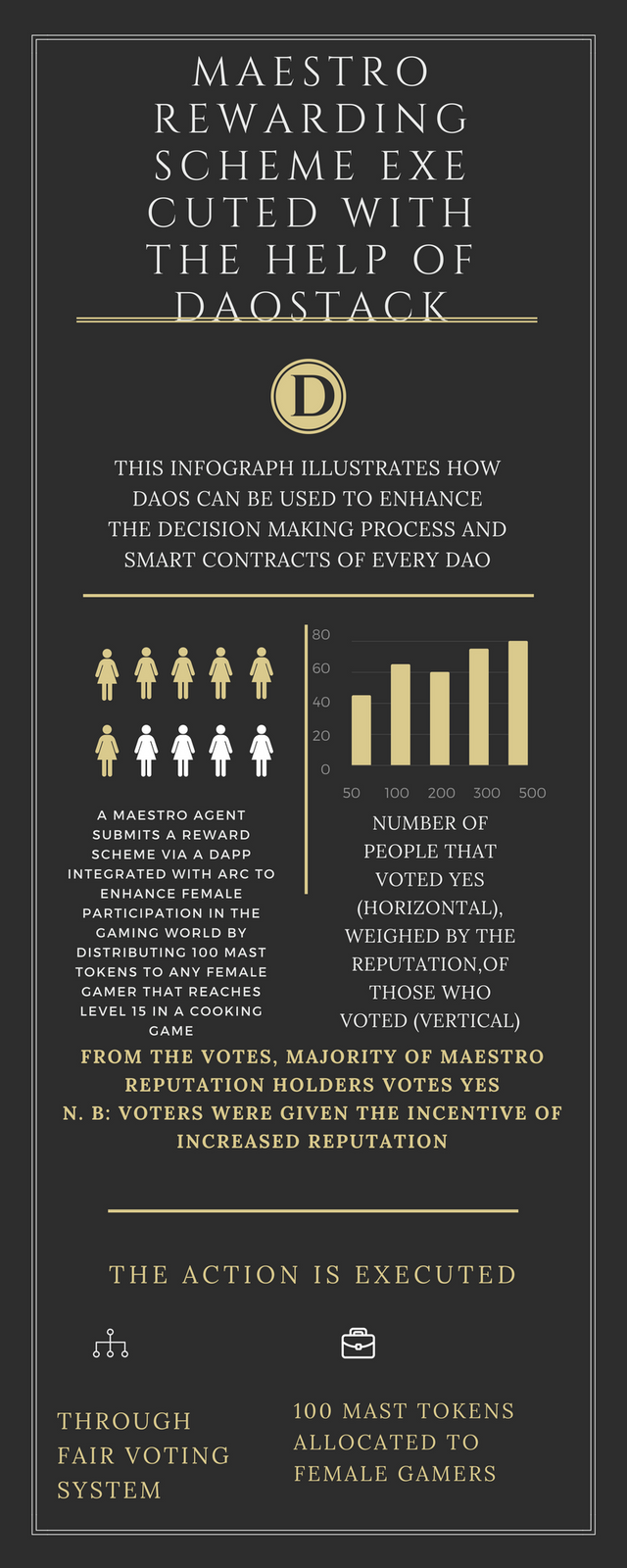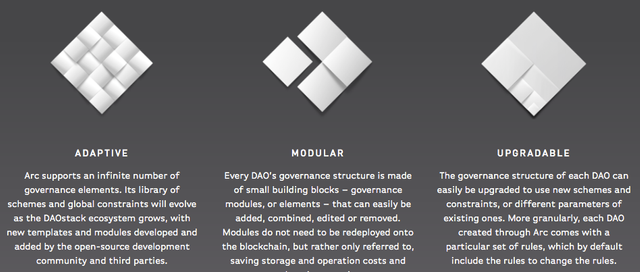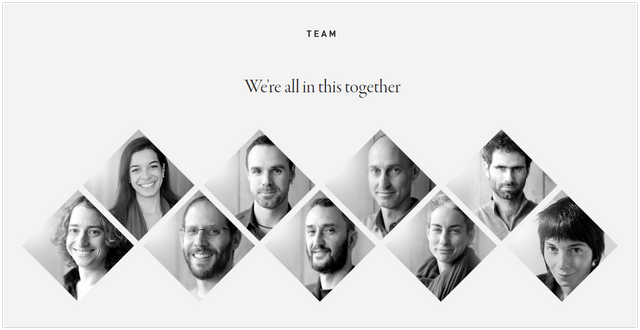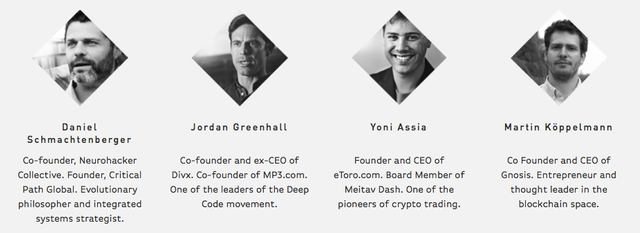DAOSTACK: An Acentric Operating System for Collective Intelligence
DAOstack is the next logical step in the continual effort to organize intelligences and harness the value of cooperation amongst organizations and institutions within the global society. Actually, the search for an effective way of organizing and commanding the collective intelligences into actualising a short or long term goal either in the economic or political arena goes as far back as centuries and it is this intensive search that has birthed traditional politico-industrialized revolutions like democracy, aristocracy, monarchy, communism, communalism, socialism, laissez faire, capitalism and so much more.
However, what these theorized revolutions, could not do, despite their high-handed noble theorists and deliberated acts of implementation, the Internet was able to achieve. Opening up several conduits of obtaining information or getting tasks done through world wide webs meant that the world could finally sit at one desk and have a proper conversation, with no barriers and with no fists thrown around. This worldwide connectivity and interactive means of distributing knowledge did not make the problem of helping purposed organisations and collective institutions advance a specific economic or non-economic interest(s) in a coordinated, interactive and transparent manner.
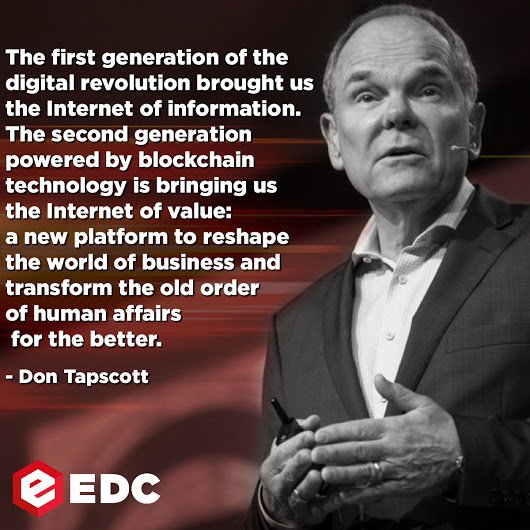.jpg)
Source - I like to call DAOstack the Third Revolution.
The Blockchain, first proposed in its most speculative form by Bitcoin's Satoshi Nakamoto, invented an open programmable accounting system and ultimately provided businesses with a coordinated, fair, trustless, and transparent way of giving and receiving value within a high density range. Built on this Blockchain are the increasing numbers of Decentralised Autonomous Organisations (DAOs) that make smart contracts executable on a scalable level and enhance coordination via a crypto based incentive. Despite the prospects underlining DAOs, there is a disparate sense of governance within the several decentralised smart companies or agencies that will indubitably go on to challenge the very coordination and collective value chain system that DAOs are meant to foster.
DAOstack presents itself as a radical solution to the challenge of managing value collectively and providing a governing framework for decentralised organizations by means of establishing an operating system for DAOs. In this regard, open source creators can build decentralised apps on the blockchain while still according the needed prerogatives to individual value members. Even more, with the ARC framework at the groundwork of DAOstack, crowd decisions and votes are cast more efficiently, transparently and proactively on the blockchain. What this means is that any such organizational structure, ranging from corporate bodies, NGOS to smart companies and nations who need a fair and free voting system can integrate DAOstack into their apps to ensure the actualisation of a goal(s).
Going by Nicole Machiavelli's definition of revolution centering around "an overthrow of the status quo", granting DAOs a governing structure that secures their future makes DAOstack a revolution in its own right. And even beyond sustaining the legacy of a cooperative world, DAOstack has evolved a new form of human association, an acentric governing system that has a forward compatibility with the future.
DAOS: Improving Structures and Scaling Traditional/Legacy Organisations
Before DAOs, organisations and cooperation of agents had been faced with problems of how to make grow their small businesses or sustain their large companies whilst remaining evergreen despite the dynamic of the market and still protecting their interests, trust, and relationships with customers. But then, the challenge was "the larger an organization is ,the more internal friction it needs to cope with; the smaller it is, the more external competition is predominant." (DAOstack Whitepaper).
Subsequently, there was the development of the Internet and Blockchain, the invention of smart companies that act as a basic unit of governance in the blockchain and the adoption Of DAO, a centerless mesh network of agencies, which is also an agency in itself (and has) no single point of control, or failure, (and ensures) there is indirect coordination, between agents, triggered by incentives and code." (DAOstack Whitepaper).
Leveraging on these network based solutions, selective companies like Facebook, Airbnb, Google have become scalable and more effectively operated with every increase in membership and engagement. Thus, the advantage enjoyed by these network based companies seated more within virtual terrains, in comparison to traditional organizations operating within physical spaces, is pretty much obvious in terms of the growth index.
What's more, a revenue model based on the crypto economy has been integrated into DAO to produce the blockchain based DApps, that like the human body or an ant colony, have no particular nuclei but rely on the active engagement of members to not just grant value for the companies, but generate well yielding incentives for the members, who are meshed into the networked assembly or fractal federal governance modes of DAO. The staggering billion dollars successes of the Bitcoin blockchain and Ethereum blockchain (on which network DAOstack is built itself) are clear examples.
This crypto-economic incentivisation is yet another advantage that DAOs (Decentralised Autonomous Organisations) have over traditional organisations. These organisations, in spite of their loyalty programs, are fraught with the burden to receive value from customers, without necessarily adding an economic value to their lives.
An Aside: This must be why most people (members of the public) advocate for the global economy to do away with FIAT - You get more value for exchanging cryptos than you do for exchanging currencies. True or false?
DAOs have indeed displaced the fixed placements of legacy organizations that are neither scalable nor replete with incentives and has stirred, at the foundation, a breakthrough when it comes to improving the cost, efficiency and structure of organizations.
However, beyond the obvious facts that the companies or institutions affected by the DAO revolution are scanty and exhibiting near monopolistic, less transparent tendencies (a far cry from the notion of a truly decentralised value adding ecosystem), there is a missing link in its within the governing system that if not rightly addressed, will not just prevent the full potentials and prospects of DAOs from being harnessed, but will also leave DAO, as a revolutionary technological solution, hanging on the edge of a crumbling precipice.
DAOstack: An Incorruptible Decentralised Governing System
DAOstack is out to close in on that one loop that characterises DAO. Unlike the operational non-cooperative Nash equilibrium practiced by the current economic system where knowledge or resources are made obscure and hidden, DAOstack proposes that organizations, upon given the right incentive, make reusable resources open and sharable.
These decentralised open organisations, will run effectively through a blockchain based decentralised governing system. A blockchain governance system is by definition "a state-transition function, that collects inputs from blockchain addresses and under certain rules spells out a global-state transition.” (DAOstack Whitepaper)
In this train of thought, an agency, which is the basis unit of governance over the blockchain, can trigger the implementation of quick decisions (agency functionalities) when the operational rules put in place on form of a governance protocol are met. And upon the fixture of certain absolute or designable restrictions (global constraints), certain rules will not be broken even when approved by the DAO itself. For instance, a global constraint can be pegged on the whitelist of agents that can request a certain task done like token issuance.
What this does for network of agencies is make crowd decision making process more transparent and less bureaucratic. These agencies put on the Ethereum Blockchain through the DAO stack, can you ahead to distribute tokens, allocate funds through token sales, manage collective database, upgrade governing protocol and most importantly, assign reputation scores to members.
The reputation system makes it possible for votes, not to be weighed by the native token stake of agents, but by other algorithms determined by the company that center around the past and valuable contributions of the agents. A single reputation score can be awarded an agent (via a proposal), or different reputation scores can be generated in light of the decision that the agent is due to vote on. The bottom line is that a meritocratic governing system where the voice of value adding agents count more is created.
In essence, decision making process is quicker, trustless and non corruptible as it becomes a simple matter of logical modus ponens, that is, if P, then Q; If P; Therefore Q. Hence, by simply putting in a place a scheme (logical functions made up of a set of instructions that rely on particular set of inputs which is processed to generate some equivalent output), certain decision will automatically be carried out in line with the modus operandi of the agency.
In making this happen, a proposal - meant to spur up some decisive course of action - is submitted, several yes and nos are voted, approved, and the right course of action is activated in line with the blockchain based votes.
An Applicable Example
Let's bring this home. DAOstack made an example out of FUNDIS, a means of exchanging ETHS, in their Whitepaper. But as schemes "can be designed to do virtually anything", I will like to make an example of something I am more acquainted with: a gaming ecosystem. Let's say a gaming platform is driven by the operational goals to create customised, decentralised gaming worlds for gamers that are autonomous (largely controlled by individual gamers and developers) yet highly interactive not just in the sense of engaging gamers but in making earned awards (swords, treasure chests, shields, stars) tradable between themselves and capable of getting exchanged into real value tokens (crypto economic incentive).
This gaming platform (permit me to call it Maestro) adopts a blockchain based solution and becomes a Decentralised Autonomous Organisation (DAO). In time, as Maestro is flooded with a large influx of gamers hoping to play variegated games and earn tokens, various decisions within the Dao, let's say, decisions regarding who and when to distribute tokens to.
If DAOstack were integrated into Maestro, this would not be a problem. With DAOstack, decisions regarding token distribution to individual gamers can be easily voted on by everyone within the system and action can be taken accordingly.
An Aside: By the way, such gaming platform knitted into a DAO exists. It is called Chimaera and it is only a matter of time before it adopts the decentralised governance of DAOstack.
Without doubt, this vote power distribution system inevitably reduces the corruption in voting system. No longer will voting be left on the hands of the few. What will consequentially be achieved is a complex mesh network mode that effectively utilises collective intelligence in actualising a shared goal.
And as to how DAOstack hopes to solve the tension of scalability and resilience in a decentralised governing system, three solutions will be adopted- compositionality, monetization of attention and relative majority. The Holographic Consensus, a novel consensus system adopted by DAOstack, further sinks the tension of scalability and resilience in the mud (read more here).
The DAO stack
Deemed the WordPress of DAOs, the DAO stack are tools that allow for the easy integration and governance of DAOs. And just like its name, it is comprised of a stack of components. Although these components are distinct, they are interoperable, so that they work together to ensure the success of open collaborations. The DAO stack is made possible through the ARC Solidity framework (ARC in this case is a Greek name meaning Method of Government). Just like every nation would have a method of government, ARC forms the method of government for DAOs integrating these stack of components.
Arc
It is a general-purpose, open source governance framework that comes with repertoire of resources in form of an open library of template governance modules, or elements that is malleable enough to fit the present need of every DAO and firm enough to withstand the future, evolving needs of the organization.
As ARC is not subjected to any fixed set of governance rules and systems (in fact, the most important one rule guiding it is that there are no rules), organisation's and developers can tweak the available elements within it to birth their own governance systems which meet their specific needs and issue their own rules.
In this sense, my Maestro gaming model can select a governance module; add, combine, edite or remove certain elements to form its governing system that plays by its own rules. What's more, because the modules do not need to be redeployed onto the blockchain, but rather only referred to, storage space, operation costs will be saved and security will be guaranteed.
ArcHives
Given the play on words, it is easy to tell that ArcHives are the shared records or registries of the ARC Operating system. It is like that open billboard that makes it possible for several stakeholders and spectators can interact with one another via the posting of requests and offers whose purposes are advanced through the spending of GEN. This virtual register is managed by the DAOSTACK community.
Arc.Js
In order for front end developers to easily build collaborative apps on the blockchain without having to have a prior knowledge of the Solidity smart programming language and Ethereum block, Arc has developed an easy Javascript gate called Arc.Js. Arc.Js, as a friendly API layer, is a Javascript library built on top of Web3.js (Ethereum’sJavaScriptAPI). Consequently, the prerogated symbiosis within the Javascript environment allows developers access to the ARC framework without having to be acquainted with the Solidity programming language. This will inevitably aid the quick adoption of DAOstack.
Alchemy
True enough, the DAO STACK is out to help individual developers and third party organizations develop and successfully integrate their own collaborative apps on Arc and into the community. But this is not possible without an interface. With this in mind, Alchemy, a native collaborative DApp, has been developed to make interfacing with Arc easy. With Alchemy, open organizations and third parties can develop their own governing system, submit proposals, vote, collaborate with others. At the Alpha stage, the crowd management resource capacity makes Alchemy an avenue for effective decision making.
The GEN Model
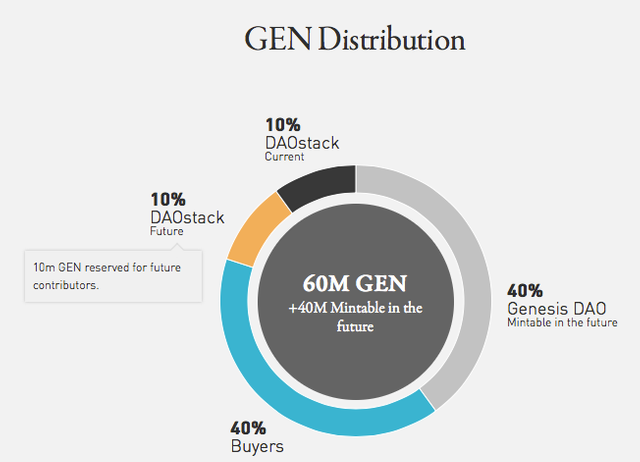
A lot has been said about the crypto economic incentive in form of tokens adopted by Agencies, DApps and DAOs. These tokens are usually circulated to contributors of value, and they appreciate even as more value is created. The GEN token adopted by DAOstack leverages in all the categories of the token economy to evolve a truly ingenious model.
By granting incentives, in form of GEN tokens, to contributors who are encouraged to develop the DAO stack, DAOstack installs itself as a decentralised collaboration. By going further to use the funds raised from token sale to invest in projects that will be built on the DAO stack as well as grow the ecosystem, whilst expecting returns, DAOstack becomes a drcentralised cooperative. Also, with the GEN model, DAOstack will be a decentralised curation network working closely with the governance elements as well as other things. In all, GEN is that token that will preempt basic operations across the DAOstack ecosystem and steer the course of the several DAOs built on the DAOstack ecosystem in the proper direction. With this GEN model, DAOstack steps forward as the future of DAOs.
DAOstack: The Evolutionary Shimmer
They didn't come to destroy anything. They came to change everything
Annihilation, 2018.
This instructive line is from a particular movie I watched recently titled Annihilation. Aside many other sub-plots, Annihilation basically told the story of a mysterious comet that shot from the sky and hit a lighthouse. The comet formed a shimmer around the lighthouse, and the shimmer, with time, just kept expanding.
Scientists upon discovering this shimmer thought it to be a menace that was intent on wiping the whole earth out. By the end of the movie, however, the only one person who went into the shimmer and survived made it clear that nothing was being destroyed. Rather, everything within the shimmer was getting repaired, receiving life again. Hence, change, evolution was taking place from within.
DAOstack is symptomatic of this shimmer. The fact that several DAOs will be willing to embrace an ecosystem that embraces change, interoperability, simplicity, openness, and upgradability, will lend ubiquity to DAOstack and consequentially, accessibility to contributors.
Also, the DAO stack being flexible, upgradable to better technical architecture and receptive to changes, reconstructions and the breaking of all known rules, brings to the table a vibrant technology that is going to be around for a long time. This near immortality will mean that DAOs will have no worries about adopting DAOstack only to have it fade away in a bit, and give way to another technological phase. DAOstack, in this sense, is not just a phase in a technological continuum, it is a revolution. And any revolution, upon gaining the right momentum, will last forever.
DAOstack: The Acentric rather than the Decentralised (A New Narrative)
Growing up as a child, I was very well acquainted with many fables especially the ones that told about about the cunning tortoise. In most of these stories, the tortoise was usually the antagonist, the foil, the kill joy and pure menacing evil with whom the other animals had a conflict of interest. He was either the greedy husband who ate the concoction meant to make his barren wife pregnant, or the cunning bachelor who mischievously got hold of the king's daughter's name, thus winning a prize for himself as her husband. But there was one particular didactic fable about the tortoise that particularly brings us face to face with the punctured reality of disparity, non-cooperation and chicanery within the several organizations and institutions across the globe.
In this video below, I have illustrated this story and shown how DAOstack serves to break the status quo by presenting a new narrative: an acentric governing system that enforces only cooperation and nothing else as the winning strategy for any organization to succeed.
To know more about DAOstack, learn and connect with the team on these platforms :
Entry to @originalworks contest
daostack2018
